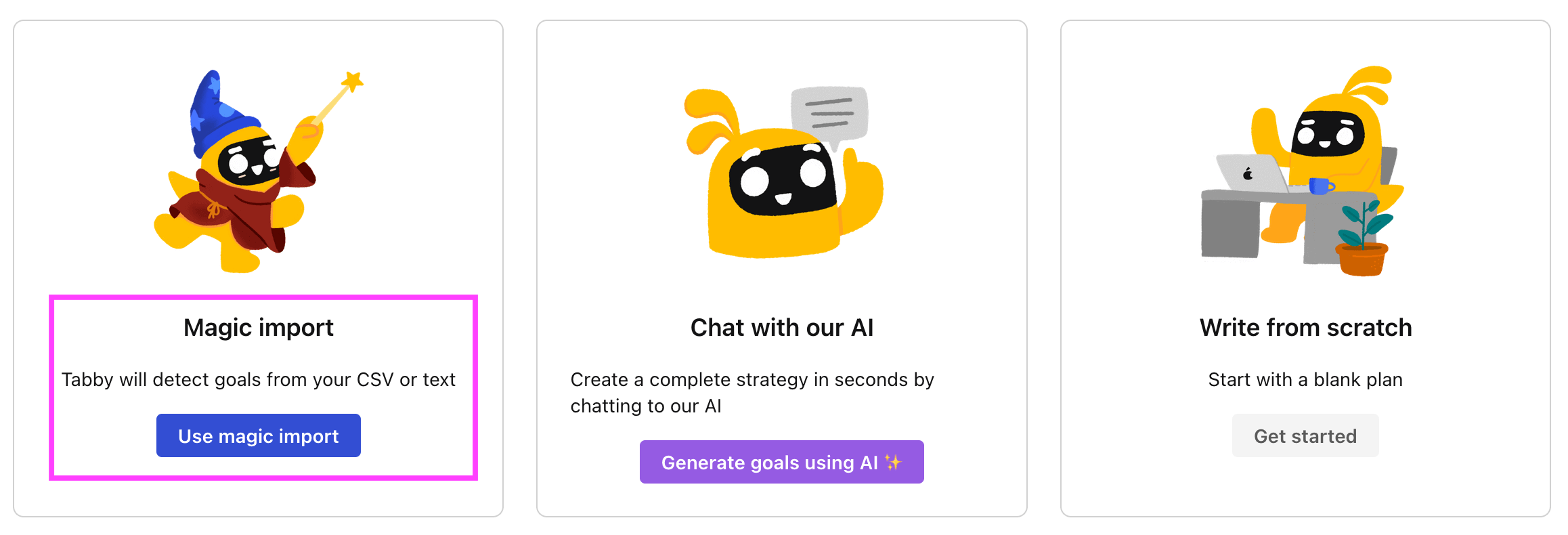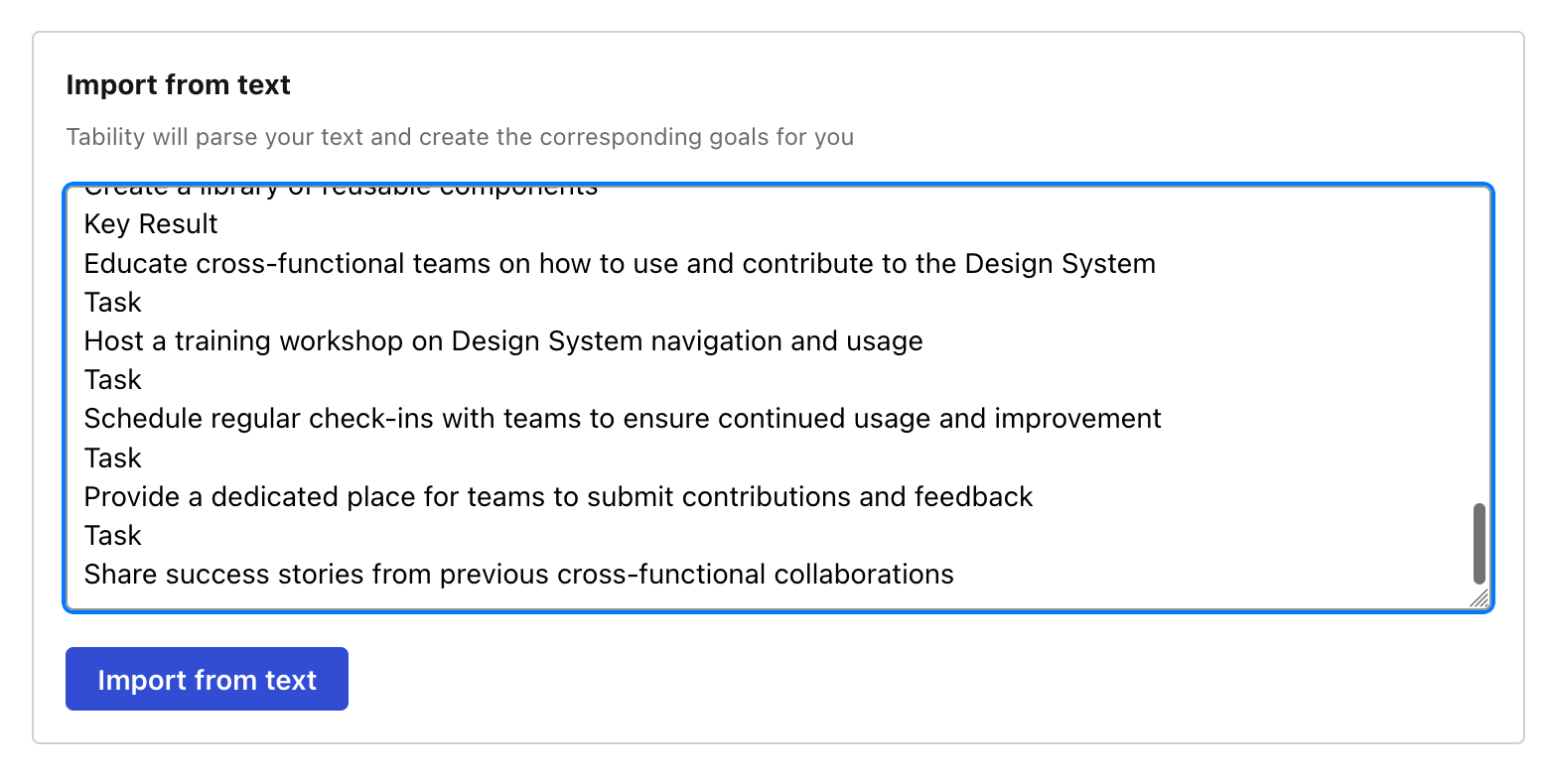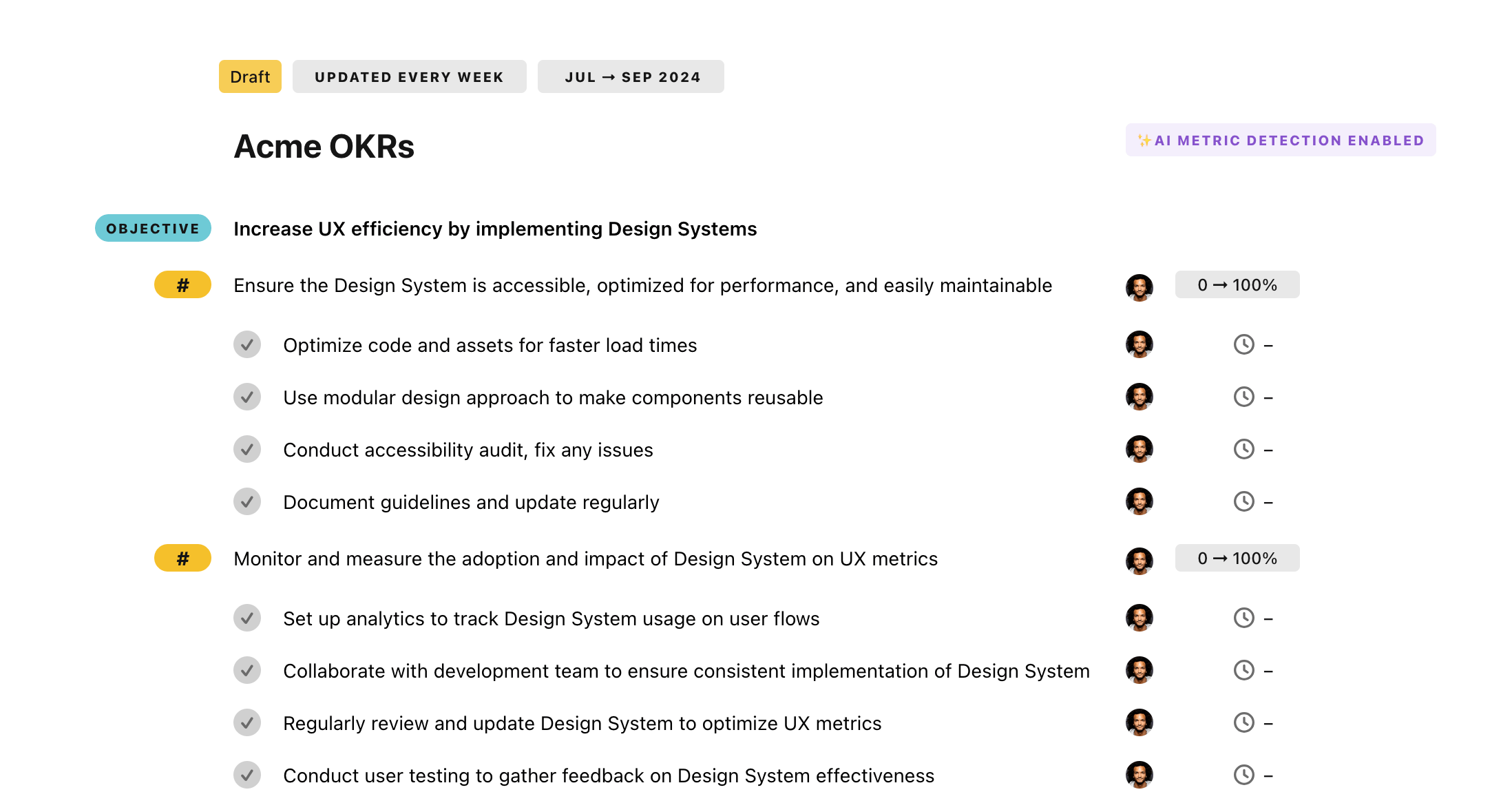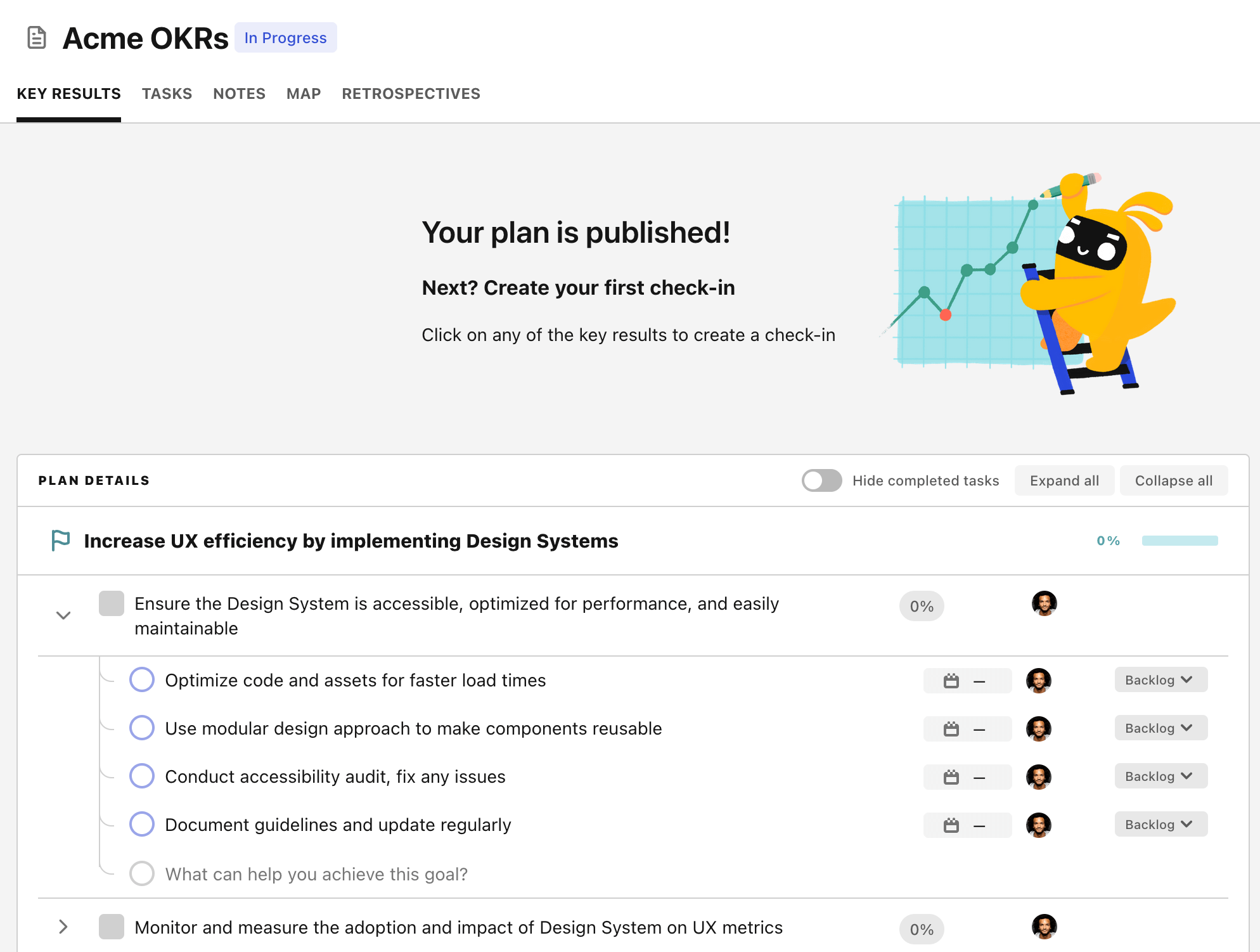OKR template to assess standard price impact on profitability
Your OKR template
A parallel objective is to formulate and apply a technique to adjust standard prices using the analysis performed by the eighth week. This includes analyzing present market trends and employing the new pricing strategy based on the findings.
Additional goals include a detailed examination of the correlation between price and profit from the previous fiscal year, outlined to be accomplished by week six. No specific initiatives are provided for this objective, indicating it could involve various methods of analysis and data sourcing.
Lastly, this OKR places heavy emphasis on incorporating the results of market analytics and utilizing the lessons to adjust pricing strategies to maximize business profitability. Detailed planning and accurate outcome assessment are also emphasized to ensure successful implementation of pricing adjustments.
ObjectiveAssess standard price impact on profitability
KRMeasure the change in profit margins after the pricing adjustments by week 12
Calculate profit margins before pricing adjustments
Evaluate profit margins at week 12
Implement the pricing adjustments
KRDesign and implement a strategy to adjust standard prices based on analysis by week 8
Implement the new pricing strategy by week 8
Conduct thorough research of the current market trends
Analyze the data and formulate a pricing strategy
KRConduct a detailed analysis of last fiscal year's price-profit correlation by week 6
How to edit and track OKRs with Tability
You'll probably want to edit the examples in this post, and Tability is the perfect tool for it.
Tability is an AI-powered platform that helps teams set better goals, monitor execution, and get help to achieve their objectives faster.
With Tability you can:
- Use AI to draft a complete set of OKRs in seconds
- Connect your OKRs and team goals to your project
- Automate reporting with integrations and built-in dashboard
Instead of having to copy the content of the OKR examples in a doc or spreadsheet, you can use Tability’s magic importer to start using any of the examples in this page.
The import process can be done in seconds, allowing you to edit OKRs directly in a platform that knows how to manage and track goals.
Step 1. Sign up for a free Tability account
Go tohttps://tability.app/signup and create your account (it's free!)
Step 2. Create a plan
Follow the steps after your onboarding to create your first plan, you should get to a page that looks like the picture below.

Step 3. Use the magic importer
Click on Use magic import to open up the Magic Import modal.
Now, go back to the OKR examples, and click on Copy on the example that you’d like to use.

Paste the content in the text import section. Don’t worry about the formatting, Tability’s AI will be able to parse it!

Now, just click on Import from text and let the magic happen.

Once your example is in the plan editor, you will be able to:
- Edit the objectives, key results, and tasks
- Click on the target 0 → 100% to set better target
- Use the tips and the AI to refine your goals
Step 4. Publish your plan
Once you’re done editing, you can publish your plan to switch to the goal-tracking mode.

From there you will have access to all the features that will help you and your team save hours with OKR reporting.
- 10+ built-in dashboards to visualise progress on your goals
- Weekly reminders, data connectors, and smart notifications
- 9 views to map OKRs to strategic projects
- Strategy map to align teams at scale